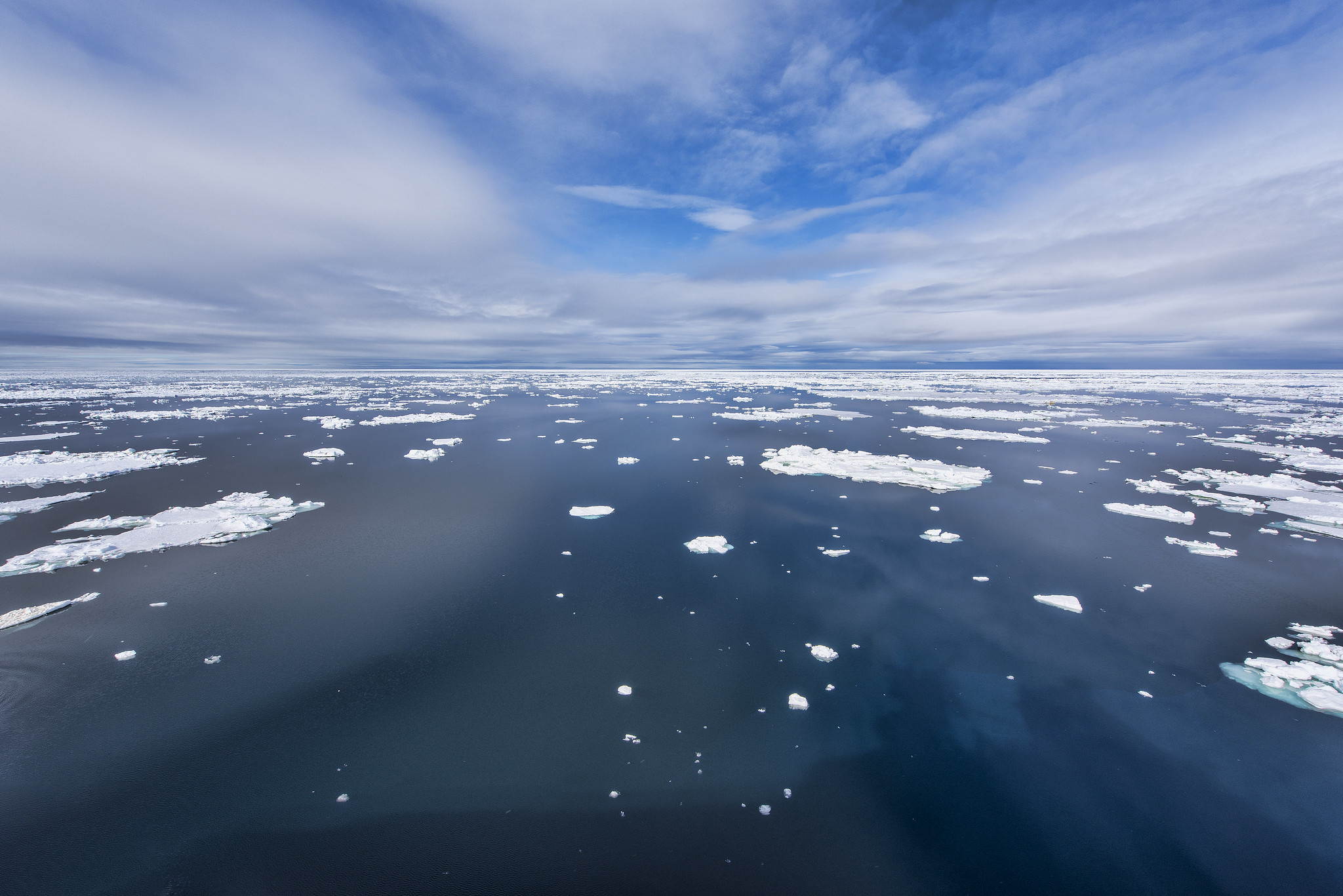Fight Against Ocean Plastic May Secure Norway UN Influence
The fight against marine pollution becomes important now that Norway is fighting for a seat on the UN Security Council. A small start-up in Lofoten, Norway may hold the key to how the world can effectively fight the enormous problem of plastic waste in the world’s oceans.
Marthe Larsen Haarr measures with steps.
Six meters across, then 100 meters upwards. A measuring band is pulled from the shore and into the land through the beach zone between pieces of rope, bottles and washed-out trainers.
- There is no limit as to what kind of waste you can find at sea, Haarr says and looks around.
At the outermost shore of the Varanger peninsula in Finnmark County, Northern Norway, north of Vardø and west of the abandoned fishing village Hamningberg, Haarr and her colleagues Carl Höjman and Michael Pantalos are soon at work in today’s first “sector”.
The start-up company Salt has, in collaboration with GRID Arendal, developed a mapping tool for marine pollution. Through making detailed registrations of marien pollution at randomly selected parts of the coast, one may use a mapping tool, a so-called GIS, to calculate the amounts of waste that exist in different areas.
where one is likely to find marine litter in other places along the coast.
Measures can then be taken directly where the problem lies, rather than spending resources scouting for locations.
- There is currently a lot of ongoing clean-up of marine litter, and much of this work is done by volunteers. However, answering the question of whether or not this kind of cleanup works and documenting that the actual amounts of waste along the shores is decreasing, is actually a problem to us, says Kjersti Tønnessen Busch, General Manager at Salt.
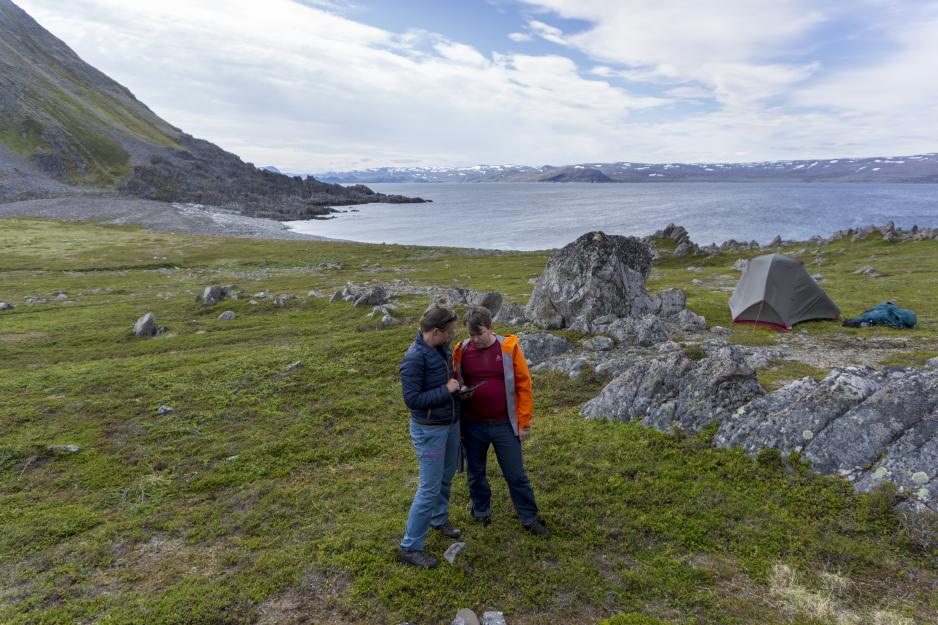
Marthe Larsen Haarr and Michael Pantalos planning today’s litter mapping.
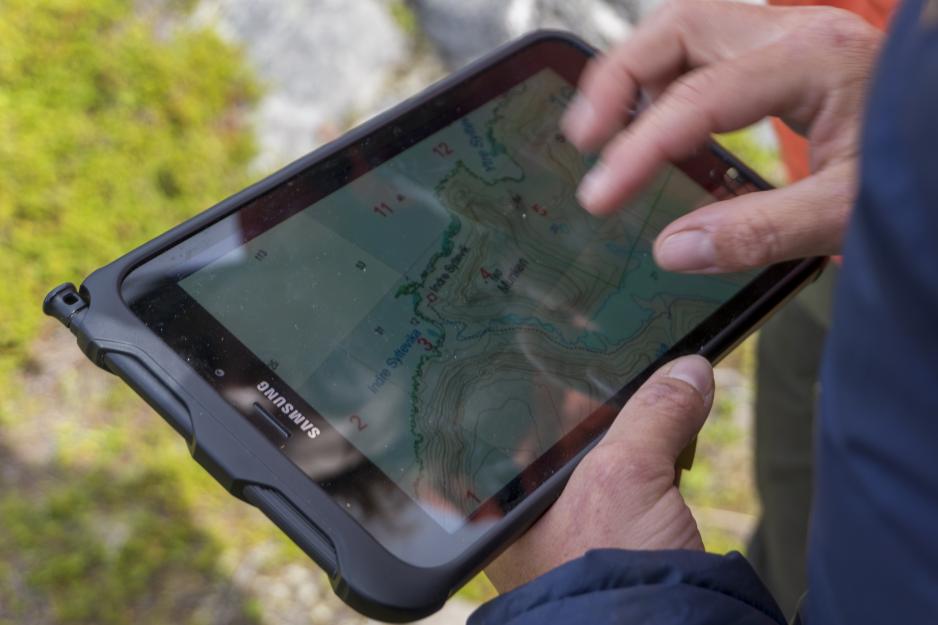
Salt maps the shoreline along selected sectors on the map.
Norway's New Export Product?
Map sector three in Indre Syltevika is one out of several randomly selected points along the Finnmark coast. Salt has conducted field work for weeks this summer. There are at present no similar models for working out secure data for marine pollution.
Plastic waste is placed in one out of four categories. Microplastics does not count, however, waste measuring more than 0.5 centimeters is registered.
Unlike others working with marine pollution, Salt is not investigating wh ere the litter comes from.
- Finding out where the garbage comes from would take too long with the model we are working on. For us, the most important thing is to get enough data points, so that the model becomes as good as possible, Haarr says.
You will find most items along the shores of the Varanger peninsula. Much of it stems from fisheries, such as ropes, trawl bags and other fishing gear. However, household waste, shoes, clothes and leftovers from the construction and building industries have also washed onshore.
- You would not believe what we find some times, Haarr says.
International attention
Salt is now upscaling a network of companies working to manage marine pollution, which is to develop the entire business chain.
- The model we are developing is to be a tool whenever there is a need for initiating a cleanup; however, it is also a tool for quantifying the waste and for finding out how much there is. What we have seen in Lofoten, Finnmark and Aust-Agder is that there is a vast difference in amounts, and there is more waste in the north than in the south (Agder). However, if we count the number of items volunteers register, the number of items appears to be almost identical, though when it comes to weight, there is far, far more in the north.
- What does that mean?
- The point is that we need reliable data. A cigarette butt in Agder is one time, as is a trawl bag in Finnmark. But if you measure them by weight, they appear a lot more different from each other, Busch says.
The project has already received international attention and Busch has been twice to Indonesia to meet the authorities in Jakarta. In the areas around the capital as well as the surrounding islands, marine littering constitutes an enormous problem.
- This is a tool we are to be able to sell to authorities in order for them to get an overview over litter in their area. If there is a demand to know how much litter there is, this model can answer that, Busch says and adds:
- In Indonesia, there is a large, informal group of people whose job it is to collect waste and sell this. The problem is that these people only pick the litter that has second-hand value when sold. The challenge lies in establishing some form of management of all the waste; not necessarily recycling, but sensible burning as well as energy recovery. That is the best method there is today for using plastic, Busch says.
- No-one has any interest in ocean plastics, neither producers nor consumers.
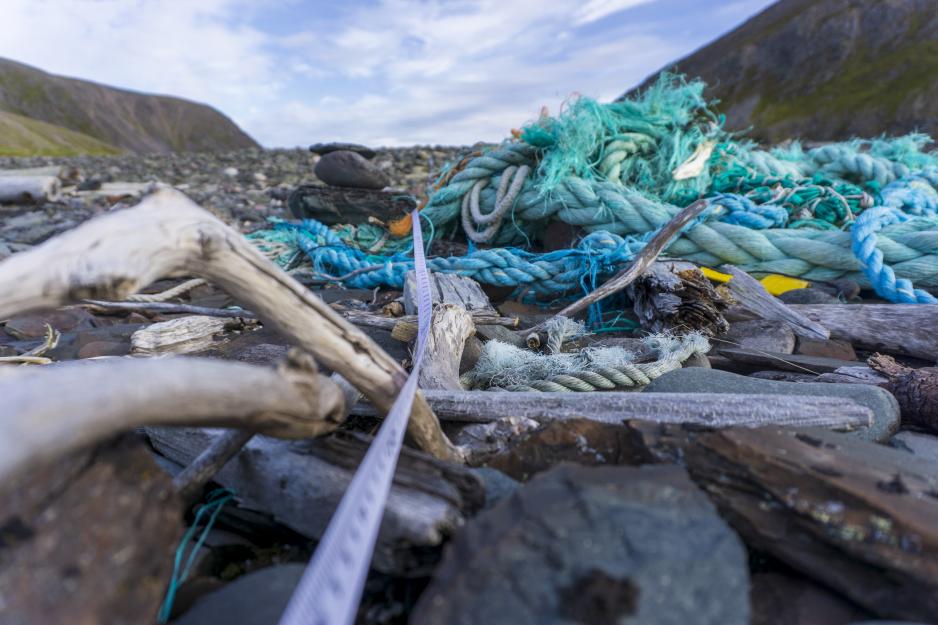
Slik ser det ut når Salt er på feltoppdrag langs kysten. Marin forsøpling dokumenteres og registreres nøye. Foto: Amund Trellevik
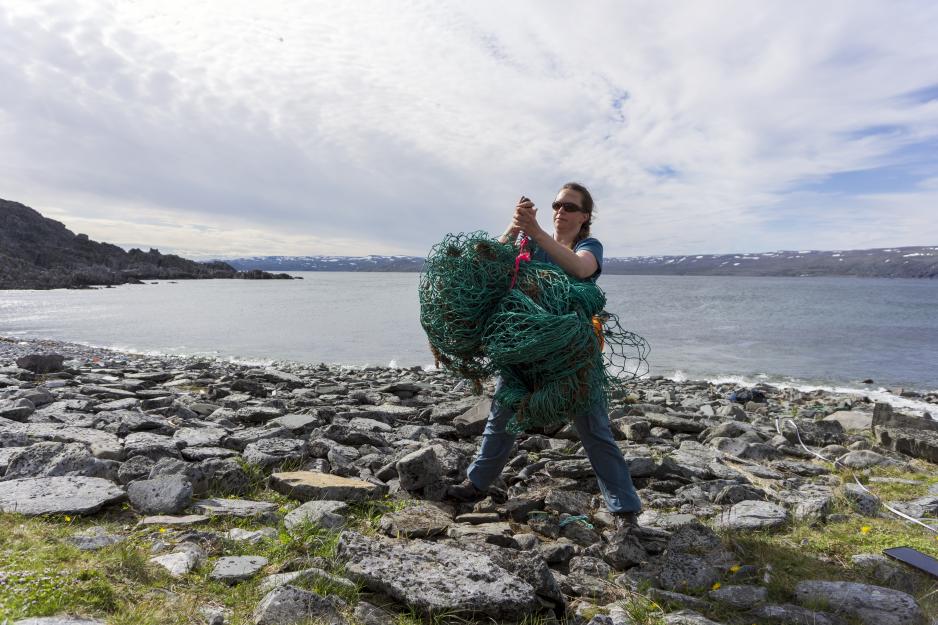
En bit av en trålnot registreres og veies.
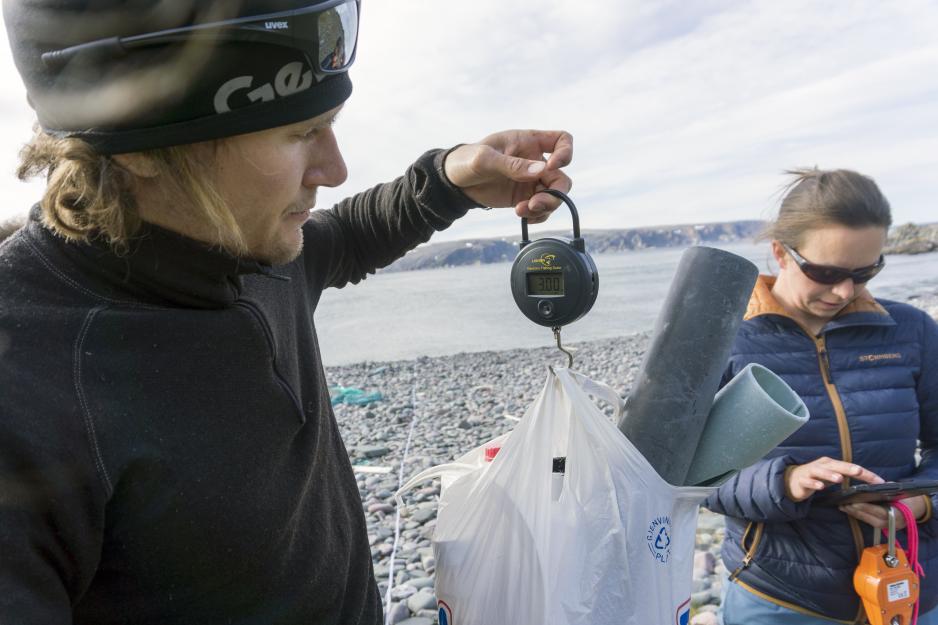
Carl Höjman weights the plastic catch of the day. Marthe Larsen Haarr documents.
Ocean Plastics on the UN's Agenda
- Norway has already brought the issue of marine pollution high up on the agenda through the UN Environment Assembly
Norway’s Climate and Environment Minister Ola Elvestuen is in New York this week for the opening of the UN. Plastic ocean waste receives widespread international attention. Elvestuen says Norway will launch an initiative to establish a new international agreement against marine littering.
- Norway has already brought the issue of marine pollution high up on the agenda through the UN Environment Assembly, and we are working to strengthen existing agreements and processes in the area. However, there are major gaps in the global regulation of marine littering, Elvestuen says.
Elvestuen argues that there is a strong political will to do more to fight marine pollution. Norway has also focused on establishing a circular economy for plastic waste in order to improve the recycling rate.
- There is a principal decision in the UN that we are to stop all ocean plastic supplies in the longer term, however, there is still a way to go before we reach agreement on a new global deal. Nevertheless, there is an increasing amount of countries and stakeholders who argue that there is a need for strengthening legal frameworks, Elvestuen says.
Busch of Salt argues that the plastic issue is a visible, yet non-sensitive problem and that it is possible to take simple political measures to improve the situation.
- No-one has any interest in ocean plastics. Nobody wants it to continue like this, neither producers nor consumers. It is easy to agree politically too that this is a problem. The EU's plastic directive, which prohibits some plastic products such as one-off cutlery and straws, is symbolically important and demonstrates that it is possible to use political tools to counter the problem, Busch says.
In only very few years, Busch has noticed a radical shift in how for instance Norwegian fishermen think about plastic waste.
- When we talk with fishermen, there is a time before and a time after. Before, there was no awareness about plastic being a non-degradable material in contrast to fish waste. Though this is not easy. It will take major changes in many countries to establish waste management. And if this succeeds in Jakarta, the problem of marine littering will be solved and the city will be a better place in which to live, Busch says.



